Last updated on April 6th, 2023 at 10:17 pm
In the 1800s, the Wild West was a lawless land where bands of outlaws roamed free. It was a time of heroes and villains, adventure, and danger.
Surprisingly, some photos from this era still exist, offering a unique glimpse into an often romanticized period of American history. Look at some of these amazing photos from the old Wild West and see if they change some of your preconceived notions.
Annie Oakley
Annie Oakley was one of the most famous sharpshooters of the Wild West. Born in rural Ohio in 1860, she first gained notoriety for her shooting skills at a local marksmanship contest.
Oakley soon joined Buffalo Bill’s Wild West show, where she performed for sold-out crowds across the country and even Europe.
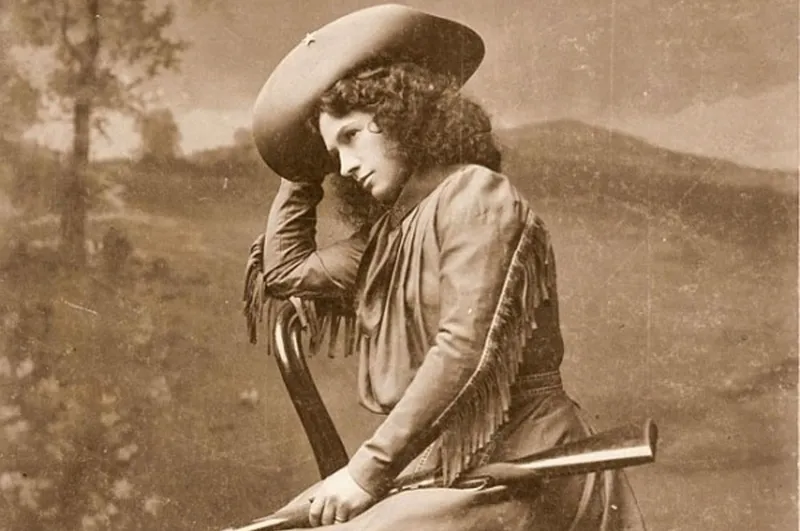
In addition to her impressive shooting abilities, Oakley was also known for her sharp wit and fearless spirit. She quickly became one of the most popular attractions in the country, and her legend only grew after she passed in 1926.
Today, Annie Oakley is considered one of the most iconic figures in American history.
Buffalo Bill’s Wild West Show
The Buffalo Bill’s Wild West Show was one of the most popular attractions of the late 19th century. Founded by William Cody in 1883, the show featured a cast of cowboys, Native Americans, and horses performing tricks and reenactments of famous battles.
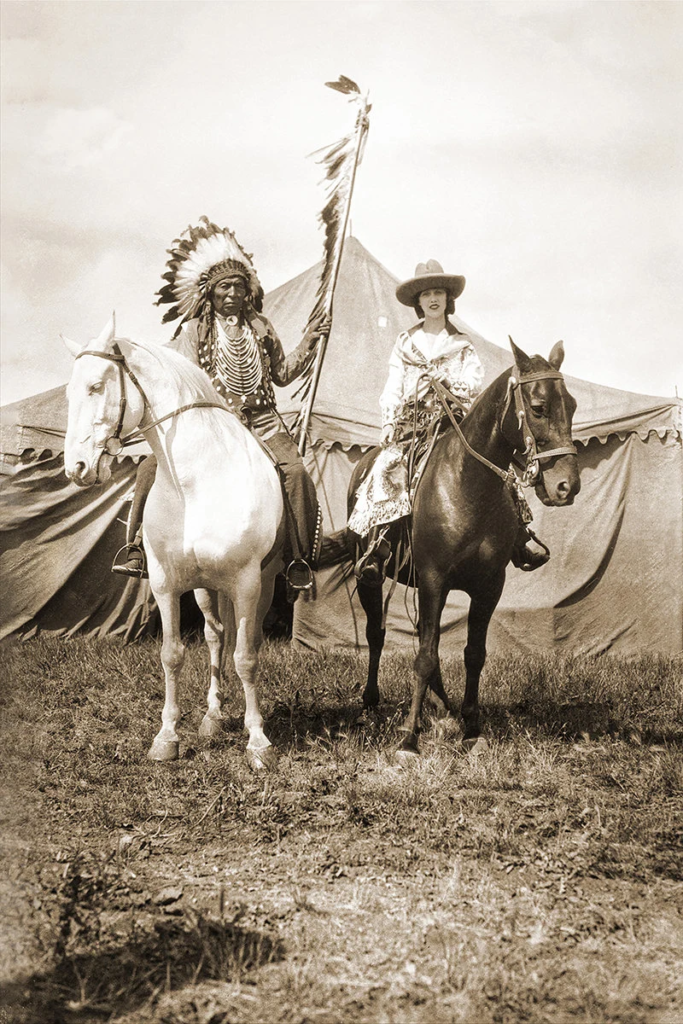
At a time when the American West was still largely unexplored, the show gave people a glimpse into the lives of its rugged inhabitants. In addition to its entertainment value, the Wild West Show also helped to foster a sense of national pride.
As one newspaper reported, “The success of Buffalo Bill’s Wild West Show is a tribute to American ingenuity and enterprise.”
Olive Ann Oatman
Olive Ann Oatman was born in Illinois in 1837. In 1851, at 14, she was kidnapped by a group of Tolkepayas while traveling with her family to California. The Tolkepayas traded her to the Mohave people, who she lived with for the next four years before being released.

She eventually married and had children, but the facial tattoos she received during this time marked her as an outsider for the rest of her life.
Yet, despite her difficult early years, Oatman went on to live a long and productive life, serving as an inspiration to others who have faced adversity.
Jesse James
Jesse James was an American outlaw who became famous for his string of robberies in the late 1800s. James was born in Missouri in 1847, and he grew up in a region that was split between the Union and Confederate states.
His family supported the Confederacy, and James became a bushwhacker, engaging in guerrilla warfare against Union forces.
In 1865, James allegedly took part in the slaying of a former slaveholder, and he soon became a target of Union vigilantes. He fled to Texas but eventually returned to Missouri and turned to robbing banks and stagecoaches.
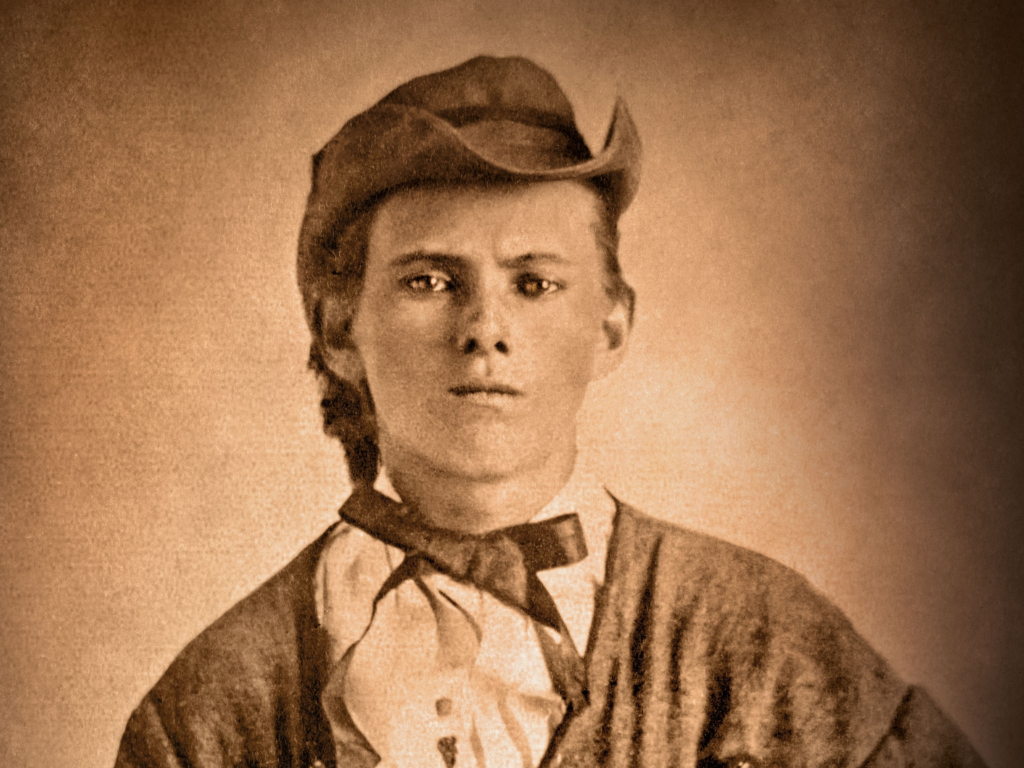
James gained notoriety for his bold robberies, becoming one of America’s most wanted men. In 1882, he was shot by a fellow outlaw who hoped to collect the hefty reward that had been offered for James’ capture.
Though he was only active for a few years, Jesse James left a lasting impression on American folklore around the Wild West.
Belle Starr
Belle Starr was a notorious outlaw in the American West who was known for her sharpshooting and her fiery temper. She rode sidesaddle and was said to be able to shoot a coin in the air and hit it with another bullet.
Born in Missouri in 1848, Belle was raised in a family of staunch Confederates. She became involved with a gang of outlaws led by the notorious Cole Younger. The gang committed a string of robberies and slayings across the Midwest.

She evaded the law until 1889, when she was shot in the back by an unknown assailant. Belle Starr remained a controversial figure.
Some saw her as a romantic figure, while others saw her as nothing more than a common criminal. Either way, her legacy continues to fascinate people to this day.
Ogallala
The town of Ogallala was in the heart of the wild west and was a haven for cowboys and outlaws. Founded in 1885, the town was named after Chief Ogallala Sioux, known for his kindness and fairness.
The town’s original layout was designed to resemble a wagon wheel, with the main street serving as the hub.

Billy the Kid
The wild west was a time of adventure and danger, and no one personified this spirit more than Billy the Kid. Born in New York in 1859, Billy quickly developed a reputation as a troublemaker.
He first came to national attention during the Lincoln County War, when he aligned himself with a group of ranchers known as the Regulators. The Regulators engaged in a bloody feud with their rivals, the House faction, leading to dozens of shootings and slayings.

When the conflict finally ended, Billy was arrested and sentenced to hang. However, he escaped from jail and went on the run, slaying several more people in the process.
In July 1881, he was finally tracked down by Sheriff Pat Garrett and took his life. Nevertheless, Billy the Kid remains one of the most notorious figures of the wild west, and his legend continues to capture the imaginations of people around the world.
James Marshall
James Marshall was an American gold prospector who is best known for his discovery of gold at Sutter’s Mill in 1848, which sparked the California Gold Rush.
Marshall was born in New Jersey in 1810, and he moved to California in 1845. He initially worked as a carpenter for John Sutter, who owned a large ranch in the Sacramento Valley.

In 1848, Marshall was inspecting the construction of a sawmill on the American River when he found some gold flakes in the water.
Although he initially tried to keep it a secret, word soon got out, and thousands of people came to California in search of gold.
The resulting Gold Rush had a profound impact on the state’s economy and population. Marshall continued to mine for gold until he passed away in 1885.
Bass Reeves
Bass Reeves was a lawman who became a legend in his own time. Born into slavery in Arkansas, he eventually made his way to Oklahoma, where he worked as a U.S. Marshal.
During his long career, Reeves arrested more than 3,000 outlaws and earned a reputation as one of the most effective law enforcement officers in the Old West.
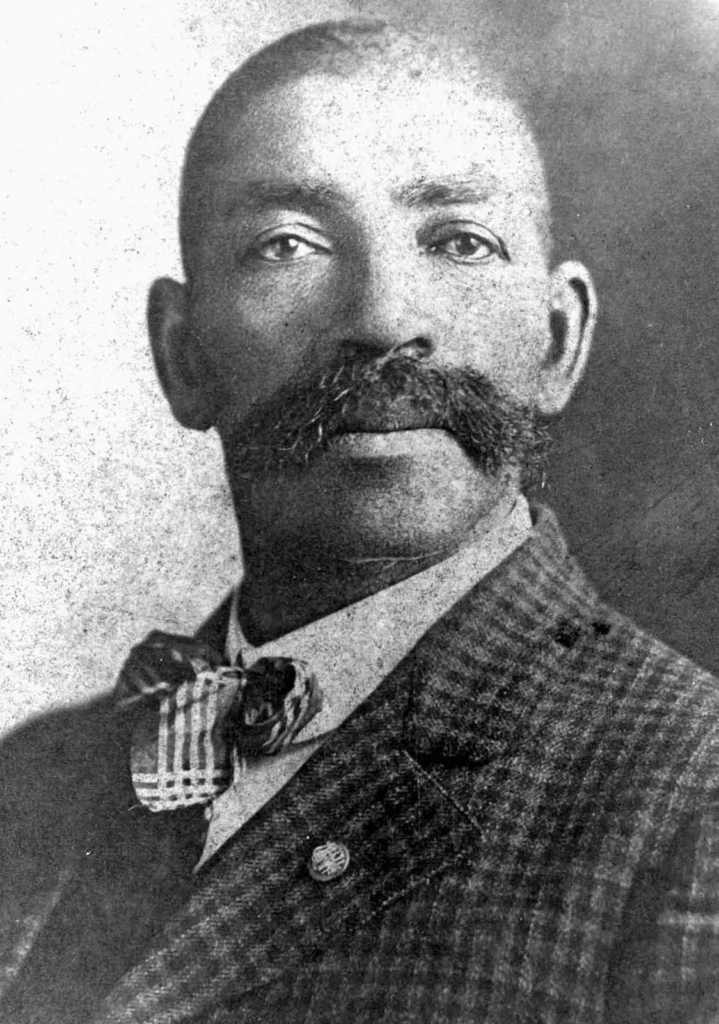
He was also known for his fairness and even-handedness, earning the respect of both whites and Indians alike. In addition to his law enforcement work, Reeves also served as a judge and jury during his years as a marshal.
After retirement, he continued to work for the Territorial Court as an adviser and investigator. Bass Reeves was a true pioneer of frontier justice, and his legacy continues to inspire those who strive for justice today.
The Pony Express
The Pony Express was a mail delivery service that operated in the United States from 1860 to 1861. The service was created to deliver mail between Missouri and California in ten days or less.

Pony riders would carry letters and packages on horseback from one station to the next, covering a distance of up to 10 miles.
Despite the challenges, the Pony Express was a successful operation, delivering over 35,000 pieces of mail during its brief existence. Today, the Pony Express is remembered as one of the most daring feats of the American frontier.
“Wild” Bill Hickok
“Wild” Bill Hickok was one of the most famous gunmen of the American Wild West. He was born in 1837 in Illinois and began his career as a stagecoach driver. He later became a lawman, and it was during this time that he earned his reputation as a skilled marksman.
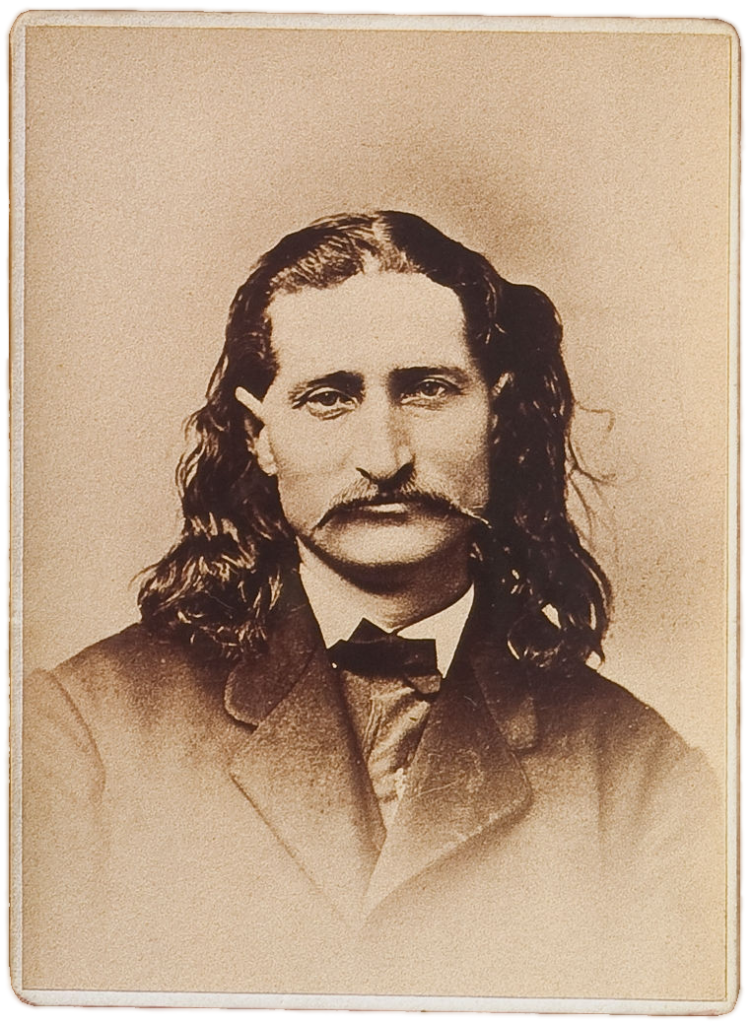
Hickok famously wore two pistols, which he kept holstered with the hammers cocked. He was slain in 1876 while playing poker in Deadwood, South Dakota.
A man sitting behind him shot him in the back of the head, instantly taking his life. To this day, “Wild” Bill Hickok remains one of the most iconic figures of the American frontier.
Butch Cassidy
There are few figures in the American West more iconic than Butch Cassidy. Born to a Mormon family in Utah, Cassidy began his criminal career as a small-time horse thief before graduating to bank robbery and train robbery.
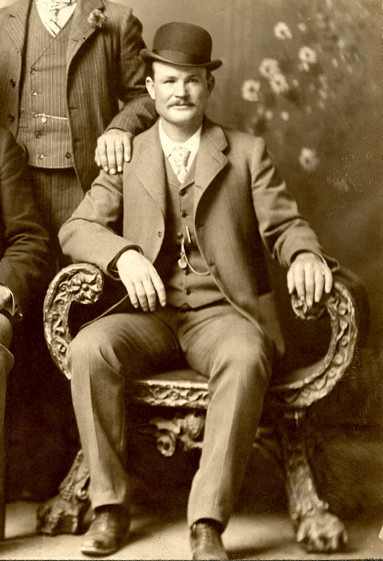
He was eventually caught and sent to prison, but he escaped and resumed his life of crime. Along with his partner Sundance Kid, Cassidy formed the “Wild Bunch,” a notorious gang of outlaws who committed some of the most daring robberies in history.
After years on the run, Cassidy and Sundance supposedly perished in a shootout in Bolivia. But their legend lives on, and their story has been the subject of numerous books and films.
Whether you love him or hate him, there’s no denying that Butch Cassidy was one of the fascinating characters of the Old West.
Mary Fields
Mary Fields was born a slave in Davidson County, Tennessee, in 1832. She worked in the cotton fields until she was freed in 1863.
After the Civil War, she moved west to work on a ranch in Montana. Mary was an excellent horsewoman and soon became well-known for her skill in driving stagecoaches.
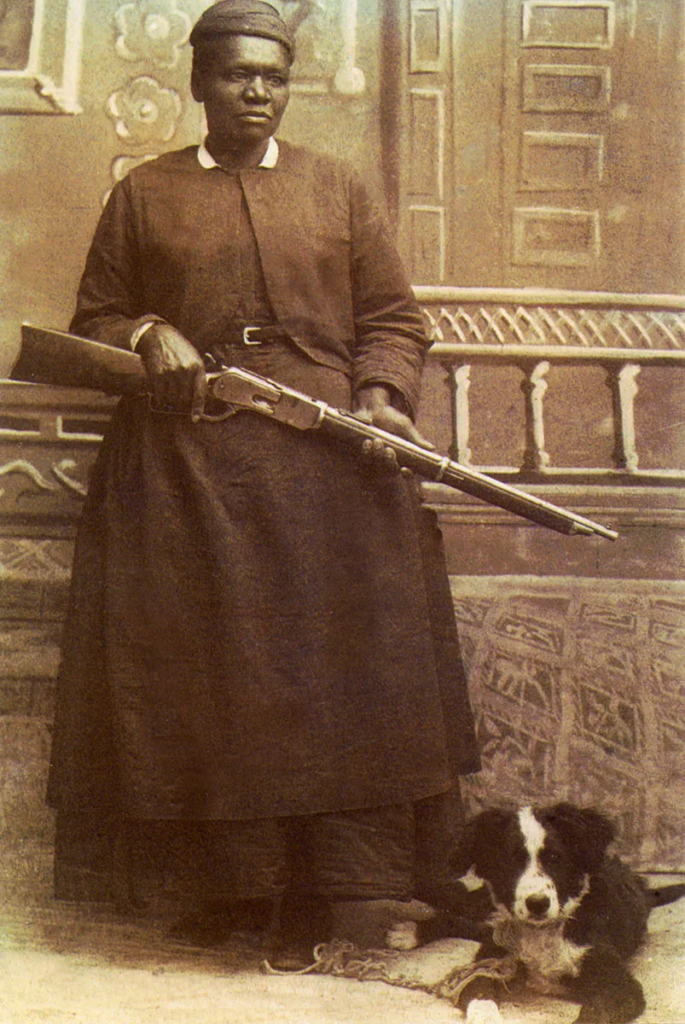
In 1895, she was the first woman to work as a mail carrier in the United States. Mary was a strong, independent woman who wasn’t afraid of hard work.
She was also known for her kind heart – she often took in stray animals, and she was always ready to assist a neighbor in need. Mary Fields was a trailblazer who overcame many obstacles in her life. She is an inspiration to us all.
Life as a Cowboy
It was lonely out there on the range. You’d wake up before dawn, start a fire and make some coffee. Then you’d saddle up your horse and ride all day, moving the cattle from one pasture to another.

There were no roads, so you had to find your way by following the sun and using the stars at night. And if you got lost, well, you might not be found until spring.
The weather could be brutal, too – hot in the summer, cold in the winter. You had to be tough to make it as a cowboy.
But it wasn’t all work and no play. There were plenty of opportunities for fun – like competitions like bronco riding and steer wrestling at the local rodeo. Or a game of poker after a long day on the trail. And when you finally rode into town after weeks on the range, you definitely deserved a cold beer (or three).
So yes, life as a cowboy could be tough. But it could also be exciting, adventurous, and downright fun.
Battle of Little Bighorn
In June of 1876, a group of Lakota and Cheyenne warriors led by Chiefs Sitting Bull and Crazy Horse soundly defeated the 7th Cavalry Regiment of the United States Army.
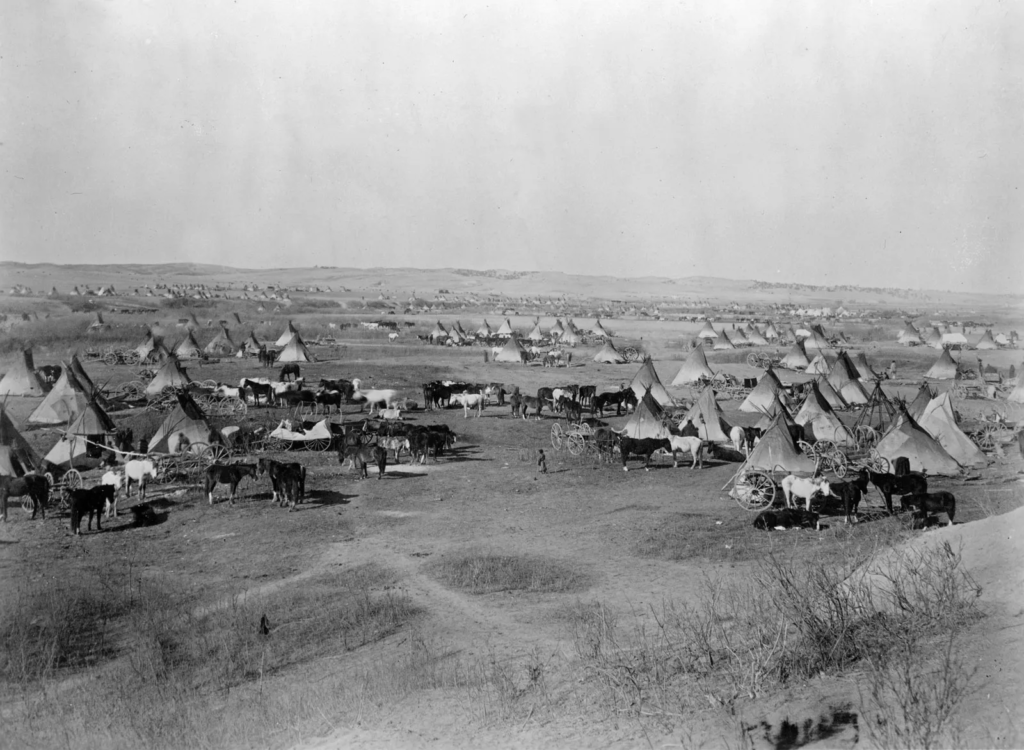
The Battle of Little Bighorn, or Custer’s Last Stand, was a pivotal moment in the history of the American West. Although the Lakota and Cheyenne were ultimately forced to surrender, the Battle of Little Bighorn was a significant victory for Native Americans.
It showcased the skill and courage of the Lakota and Cheyenne warriors, and it dealt a crushing blow to the reputation of the US Army. The Battle of Little Bighorn is remembered as one of the most famous battles in American history.
Big Nose Kate
Big Nose Kate was a famous character in the American West. She was born in Ireland in 1846 and moved to the United States as a young woman.

Kate became a well-known dance hall girl and later a prostitute. She is best remembered for her relationship with Doc Holliday, whom she met in Tombstone, Arizona.
The two had a tumultuous relationship, but they remained close until Holliday passed away in 1887. Kate outlived Holliday for many years and passed away in 1940 at the age of 94.
Throughout her long life, she was known for her quick wit and sharp tongue. Kate was one of the most colorful characters in the history of the American West.
Fannie Porter
Fannie Porter was a 19th-century American madam who ran a brothel in San Antonio, Texas. Born in New Orleans, she eventually moved to San Antonio and opened her brothel there in 1881.

She quickly gained a reputation for being one of the most successful madams in the city, and her brothel became a popular destination for wealthy men from all over Texas.
Porter was known for her lavish parties and expensive gifts, and she even attracted the attention of famous politicians and celebrities.
In 1896, she was arrested and charged with running a prostitution ring, but she was ultimately acquitted. Despite her legal troubles, Porter remained one of the most popular figures in San Antonio.
Shootout at the O.K. Corral
On October 26, 1881, a gunfight erupted in Tombstone, Arizona, that would go down in history as the Shootout at the O.K. Corral.

The conflict began when Ike and Billy Clanton, along with several other men, refused to give up their guns when ordered to do so by the town marshal. Words were exchanged, and tempers flared until, finally, the marshal opened fire.
The Clantons and their allies returned fire, and within seconds, three men were slain and three more wounded. The gunfight lasted only about 30 seconds, but its impact would be felt for decades to come.
The Shootout at the O.K. Corral is now considered one of the most famous incidents of the American Old West.
Wild Bunch
The Wild Bunch was a group of American outlaws who operated in the American West in the late 1800s. The group was led by Robert Leroy Parker, better known as Butch Cassidy.

The Wild Bunch was known for robbing banks and trains and became famous for their bold and brazen crimes. The group eventually disbanded, but their legend lives on.
The Wild Bunch has been featured in numerous books and movies, and their story fascinates people today.
Cole Younger
Cole Younger was a famous American outlaw who was born in Missouri in 1844. He became involved in the criminal underworld at a young age and soon developed a reputation as a fearless outlaw.
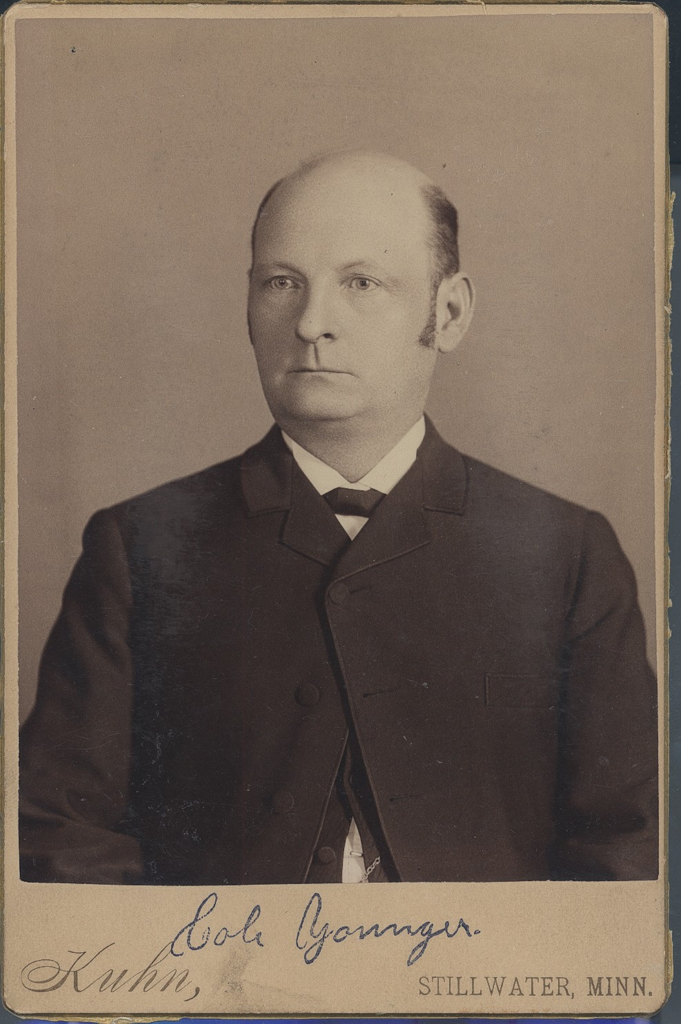
In 1865, he joined forces with Jesse James and participated in a number of high-profile robberies, including the notorious robbing of the First National Bank of Northfield, Minnesota. After a decade on the run, Younger was finally captured by Pinkerton detectives in 1876.
He was sentenced to life in prison but was released on parole after 20 years. Younger passed in 1916 at the age of 72.
Although he led a life of crime, Younger was also known for his compassion and his sense of humor. He was regarded by many as one of the most colorful figures of the Old West.
John Wesley Hardin
In 1853, John Wesley Hardin was born in Bonham, Texas. The second of eight children, Hardin grew up in a strict Methodist household. His father was a Circuit rider preacher, and his mother was a schoolteacher.
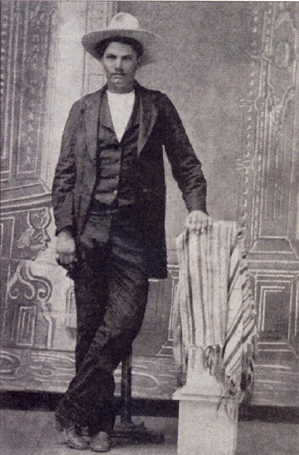
Hardin’s upbringing instilled in him a strong sense of right and wrong. As he grew older, Hardin began to chafe under the constraints of his religious upbringing.
He began to drink and gamble and got into fights with other boys his age. In 1868, at the age of 15, Hardin took his first man’s life in a fight. He was tried as an adult and sentenced to five years in prison.
Upon his release, he moved to Florida, where he worked as a cowboy and became involved in the cattle rustling business. In 1874, he slew another man in a fight and fled to Texas.
There, he met and married Jane Bowen, with whom he would have three children.
Over the next few years, Hardin took several more lives in shootings and duels. In 1877, he was arrested for the slaying of a deputy sheriff and sentenced to 25 years in prison.
He was paroled after serving 17 years of his sentence. Upon his release from prison, Hardin moved to El Paso, where he worked as a lawyer and rancher. He passed away of natural causes in 1895 at the age of42.
San Francisco During the Goldrush
San Francisco is a city that has always been defined by change. In the early 1800s, it was a sleepy backwater, but the discovery of gold in 1848 transformed it into a booming metropolis.
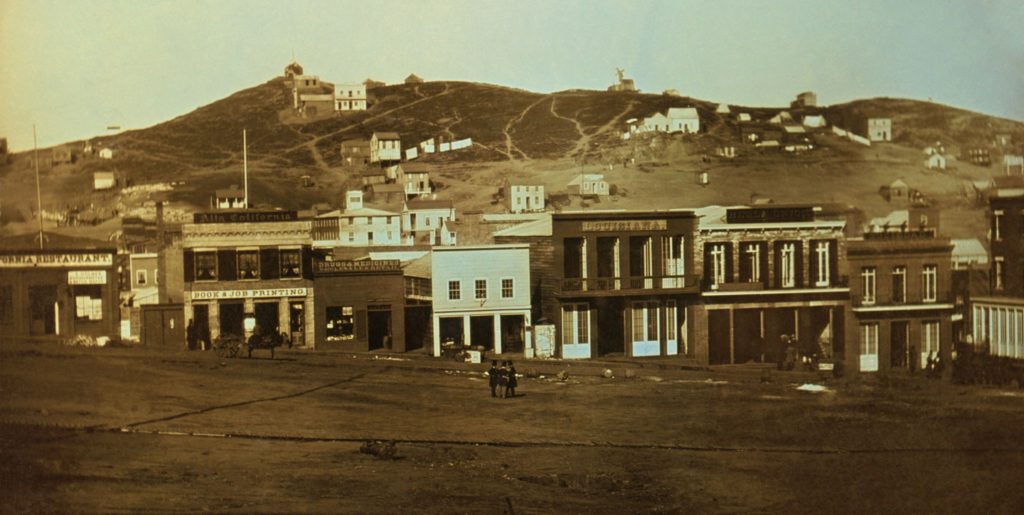
Thousands of people flocked to the city in search of wealth, and over the next few years, San Francisco rapidly grew and changed.
By 1852, it was the largest city in California, with a population of over 20,000. The gold rush also brought new people and cultures to San Francisco, resulting in a diverse and vibrant city. Even today, the spirit of the gold rush can still be seen in San Francisco’s dynamism and energy.
Central City, Colorado
Central City, Colorado, is a small town with a long history. Founded in 1859, it was once a wild west frontier town full of saloons and gambling halls.

Ezra Meeker
Ezra Meeker was a man of the old west. A pioneer who helped to tame the wild west, he was a trailblazer who helped to open up new frontiers. He was also a man of great resourcefulness and courage who faced many challenges in his life.

Born in Ohio in 1830, Meeker was just a young man when he headed west to Oregon in 1852. He settled in Puget Sound, where he built a successful farm and became one of the area’s leading citizens.
In 1864, Meeker embarked on a new adventure, becoming one of the first settlers in what is now Washington state. He later served as the mayor of Tacoma and as a member of the Washington State Legislature.
In his later years, Meeker became known as an advocate for the preservation of the Oregon Trail.
He traveled across the country several times to raise awareness of its importance and even erected monuments along the trail to mark its history.
Meeker’s tireless efforts helped preserve the old west’s legacy, and his story is an enduring reminder of America’s pioneering spirit.
Homesteaders in the Wild West
The Old West was a time of exploration and adventure, and homesteaders played a vital role in opening up the frontier. Although homesteading was difficult and often dangerous, it offered families the chance to own their land and build a new life.
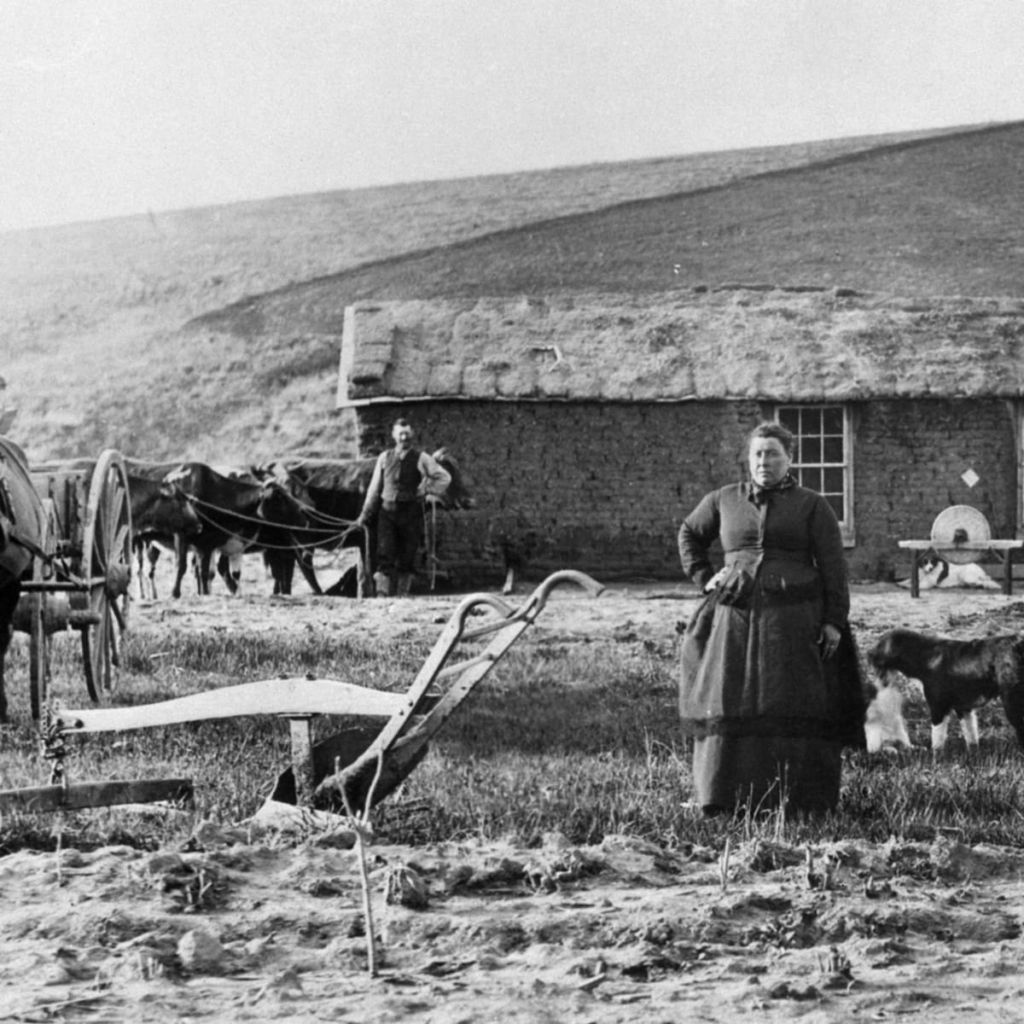
For many homesteaders, the journey west began with a long overland trail. These intrepid pioneers faced many challenges along the way, including harsh weather conditions and scarce resources.
Once they reached their destination, homesteaders had to contend with building homes and fences, planting crops, and dealing with pests and predators.
It was a tough life, but one that many families were willing to take on in order to realize their dream of owning their own piece of the American West.
Calamity Jane
Calamity Jane was one of the most famous figures of the American Wild West. She was known for her unconventional lifestyle, sharpshooting skills, and close friendship with the famed folk hero, Wild Bill Hickok.
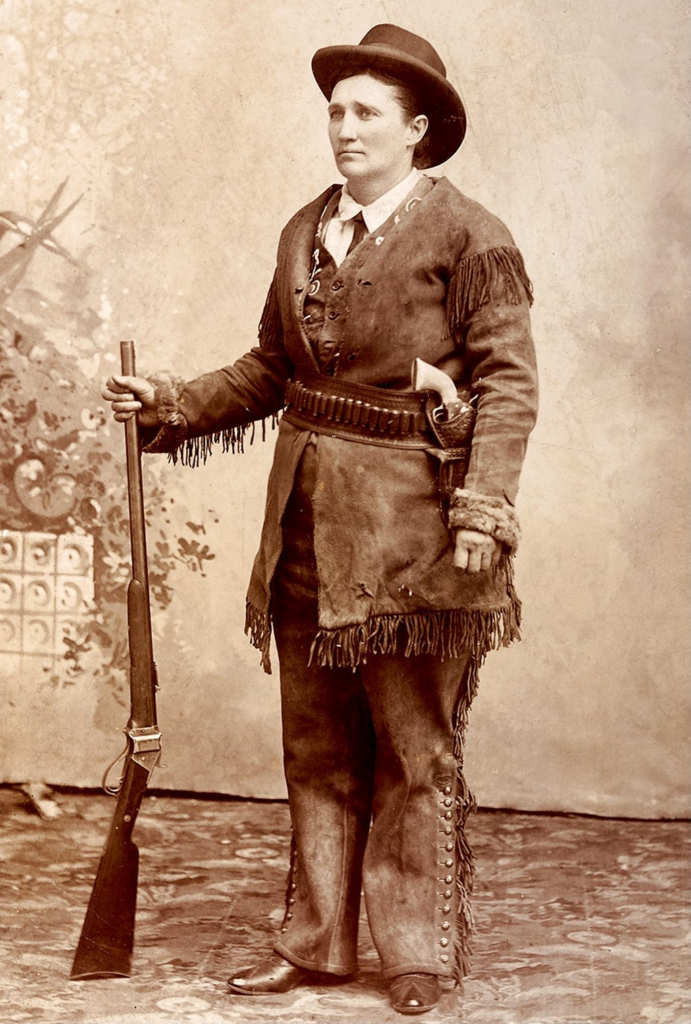
Born in Missouri in 1852, Jane moved west as a young woman in search of adventure. She soon found work as a stagecoach driver and eventually became a scout for the United States Army.
During her time as a scout, Jane first gained notoriety, as she was often involved in skirmishes with Native Americans.
In 1876, she met Hickok in Deadwood, South Dakota, and the two became fast friends. Hickok was gunned down just a few months later, an event that deeply affected Jane. She continued to live an adventurous life but never forgot her friend Wild Bill.
Tombstone, Arizona
Tombstone, Arizona, is best known as a wild west town, and for a good reason. It was one of the most lawless towns in the old west, attracting all sorts of outlaws, gunslingers, and adventurers.
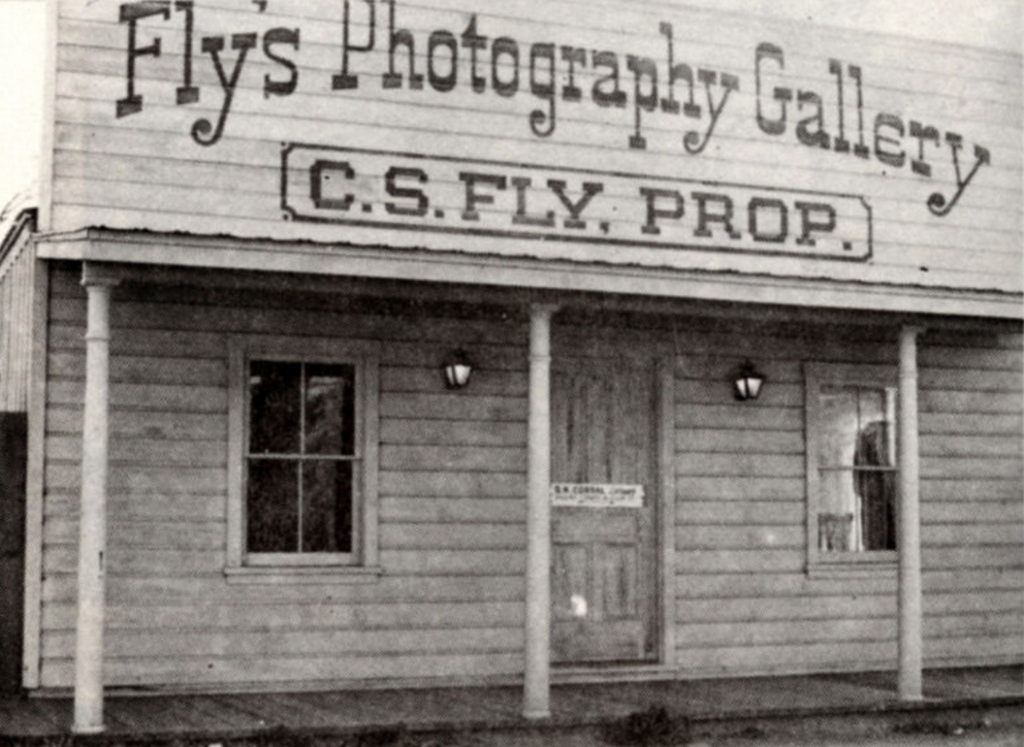
The town was also the site of the infamous Gunfight at the O.K. Corral, which only added to its reputation. Today, Tombstone is a popular tourist destination, and visitors can still get a taste of the wild west.
The town has preserved many of its original buildings, including the O.K. Corral, and there are plenty of opportunities to learn about its storied past.
Geronimo
Geronimo was a Native American warrior who fought against the Mexican Army and later the United States Army. He was born in what is now Arizona, and he belonged to the Bedonkohe tribe of the Apache people.

Geronimo became a warrior at a young age, and he quickly gained a reputation for his skill in battle. He led his people in several successful raids against both Mexican and American targets.
However, he eventually came into conflict with the US government, which was trying to move all Native Americans onto reservations.
After years of war, Geronimo finally surrendered in 1886. He was sent to prison, but he was eventually released and allowed to return to the reservation. Geronimo passed away in 1909, but he remains an iconic figure in American history.
The Anti-Saloon League
The Anti-Saloon League was an American political organization that advocated for the prohibition of alcohol. The League was founded in 1893, and it quickly became a powerful force in politics.

The League was particularly active in the Midwest, where it helped to secure the passage of several state prohibition laws. However, the League’s ultimate goal was to secure a nationwide ban on alcohol.
To this end, the League campaigned tirelessly for the passage of the Eighteenth Amendment.
While the Amendment was initially met with resistance, the League’s persistent lobbying eventually led to its ratification in 1919.
As a result of the League’s efforts, prohibition became the law of the land, and alcoholic beverages were effectively outlawed in the United States.
Poker in the Wild West
In the late 1800s, poker was the primary form of gambling in the American West. Outlaws and lawmen alike often gathered in saloons to play cards, and many a hand was won or lost on a turn of the cards.

However, poker was more than just a way to pass the time; it was also a form of entertainment.
In an era when there were few forms of entertainment available, poker provided an opportunity for people to socialize and show off their skills. In addition, because poker is a game of chance, it allowed people to take risks and test their luck.
For many people living in the western United States, poker was an essential part of life.
Today, poker is still a popular form of gambling, but it has lost some of its luster. With so many other forms of entertainment available, poker has become just one option among many.
Nevertheless, it still remains a popular pastime for those who enjoy taking risks and testing their luck.
The California Gold Rush
The California Gold Rush was one of the most important events in American history. It began in 1848 when gold was discovered at Sutter’s Mill and quickly spread as news of the discovery spread throughout the country.
Thousands of people from all over the world converged on California in search of gold, and the resulting population boom profoundly impacted the state.
The Gold Rush also led to a dramatic increase in trade and commerce and a sharp spike in inflation.

By 1850, California’s population had exploded to over 200,000, making it one of the fastest-growing states in the nation. The Gold Rush continued until 1855 when gold production began to decline.
Although it lasted for only a few years, the Gold Rush impacted California and the American West.
Rufus Buck Gang
From 1896 to 1897, the Rufus Buck Gang terrorized Indian Territory, now Oklahoma. The gang, which was made up of both Native Americans and African Americans, committed a series of robberies and slayings.

They were finally captured after a shootout with law enforcement in which two officers were slain. The gang’s leader, Rufus Buck, was hanged in July 1897.
The Rufus Buck Gang was one of the most notorious outlaw gangs in the American West. Their story is a reminder of the violence and disorder that existed in the frontier territories during the late 19th century.
Crazy Horse
In the late 1800s, a Lakota warrior named Crazy Horse became one of the most respected leaders of his people. He was known for his courage and fighting skills and led his tribe in many successful battles against the US Army.
However, Crazy Horse’s greatest victory came in the Battle of the Little Bighorn, where he and his warriors defeated General George Custer and his troops.
After this victory, Crazy Horse became a symbol of hope for Native Americans who were struggling to keep their land and their way of life.

Unfortunately, Crazy Horse’s success made him a target for the US government, and soldiers slew him in 1877 while he was trying to escape from captivity.
Crazy Horse remains an important figure in Native American history despite his tragic end.
Black Canyon, Colorado
Colorado’s Black Canyon is a steep and wild place. The canyon walls are mostly made of Precambrian gneiss and schist, rocks that are more than 2 billion years old.
The canyon is about 1,000 feet deep and two miles wide at its widest point. It was carved by the Gunnison River, which flows through the center of the canyon.

The Black Canyon has a long and colorful history. Native Americans lived in the canyon for centuries before Europeans arrived. The first Europeans to see the canyon were probably Spanish explorers in the 1500s. But it wasn’t until 1806 that the canyon was truly “discovered” by American settlers.
In that year, Lt. Zebulon Pike led an expedition into the area in search of the legendary lost city of Quivira. Pike didn’t find any lost cities, but he did become the first recorded person to descend into the Black Canyon.
Since then, the canyon has been a popular destination for explorers, settlers, and tourists alike. Inkowski Day Use Area, located near the south rim of the canyon, is named for John C. Ingersoll, who ran a stagecoach station there in the late 1800s. Today, visitors can enjoy hiking, camping, fishing, and bird watching in Black Canyon National Park.
The Wheeler Survey Group
The Wheeler Survey Group was an exploration and mapping expedition funded by the United States government in 1869. The group was led by Captain George M. Wheeler and consisted of topographical engineers, naturalists, and photographers.

Their mission was to survey the western United States and create accurate maps of the region. Over the course of three years, the group traveled more than 8,000 miles and made detailed observations of the geography, geology, flora, and fauna of the American West.
The resulting maps and reports were essential in opening up the West to settlement and development. Today, the Wheeler Survey Group is considered one of the most important scientific expeditions in American history.
Doc Holliday
Doc Holliday is best known for his role in the gunfight at the O.K. Corral, but there is much more to his story than that. Holliday was born in Georgia in 1851 and grew up in a wealthy family. He was educated in the finest schools and showed great promise as a student.
However, his life took a turn when his mother passed away from tuberculosis when he was just 15 years old. His father remarried soon after, and Doc didn’t get along with his new stepmother.
As a result, he left home and headed west. He eventually ended up in Dodge City, where he met Wyatt Earp.

The two men became friends, and when Earp was appointed marshal of Tombstone, he asked Holliday to come to help him keep the peace. It was there that Holliday made his name as a gambler and a gunfighter.
On October 26, 1881, the famous gunfight at the O.K. Corral took place. Holliday was on Earp’s side, and though they were outnumbered, they emerged victorious.
However, the fight led to a vendetta against the Earps by the Cowboys, a group of outlaws who supported the McLaury brothers (who had been slain in the gunfight).
Over the next few months, several members of both groups were massacred in shootouts. Finally, Wyatt Earp tracked down the leaders of the Cowboys and slew them all.
Doc Holliday played a key role in this final showdown, and after it was over, he left Tombstone for good.
He headed south to Texas, where he lived out the rest of his days. Doc Holliday passed away from tuberculosis in 1887 at the age of 36. Though his life was short, he left behind a legend that has endured for over a century.
Buffalo Soldier
The Buffalo Soldiers were a group of African American soldiers who served in the United States Army during the Indian Wars. The term “Buffalo Soldier” was first used by the Cheyenne warriors, who were impressed by the soldiers’ courage and tenacity in battle.
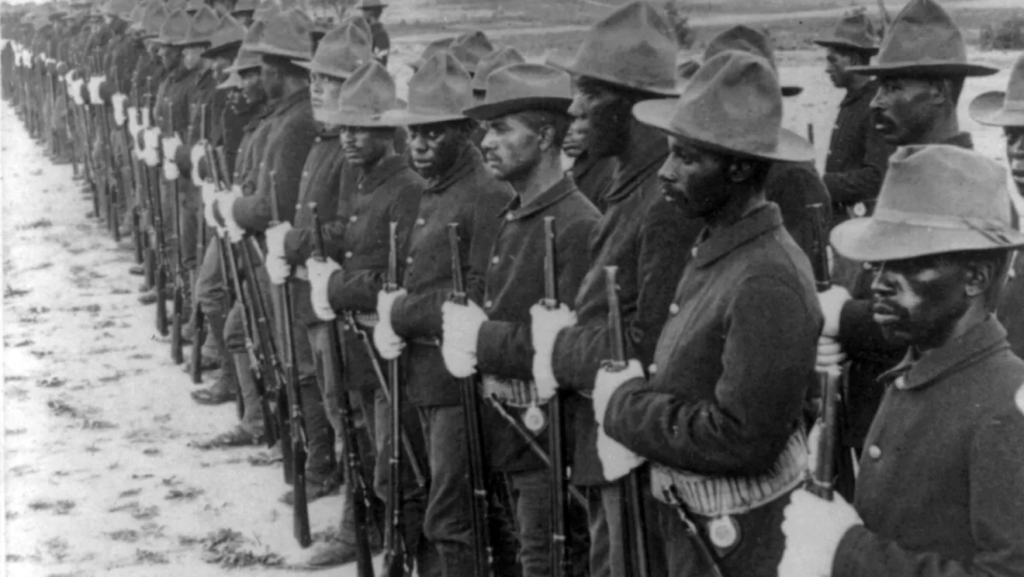
The Buffalo Soldiers went on to distinguish themselves in a number of conflicts, including the Spanish-American War and the Philippine insurrection. Today, the legacy of the Buffalo Soldiers is honored by a number of military units, including an active-duty cavalry regiment.
Deadwood
Nestled in the heart of the Black Hills, Deadwood is a small town with a big history.

Founded in 1876, the town was a booming gold-mining town during the 19th century. However, it was also known for its lawlessness, and infamous outlaws such as Wild Bill Hickok and Calamity Jane made their home here.
Alfred A. Hart
Alfred A. Hart (1816-1913) was an American photographer best known for his work documenting the construction of the transcontinental railroad.
Born in England, Hart emigrated to the United States with his family as a child. He began his career as a portrait painter but soon turned to photography, opening a studio in Sacramento, California.

In 1865, Hart was hired by the Central Pacific Railroad to document the construction of the western section of the transcontinental railroad.
Over the next few years, he took hundreds of photographs of the railroad’s progress, from the laying of tracks to the completion of the first transcontinental train journey.
Hart’s photographs provide a unique record of one of America’s most ambitious engineering projects and have been featured in numerous exhibitions and publications.
Today, Alfred A. Hart is considered one of the foremost American photographers of the 19th century.
Building the Transcontinental Railroad
On May 10, 1869, the Central Pacific and Union Pacific Railroads met in Promontory, Utah, marking the completion of the first transcontinental railroad in the United States. The accomplishment was a testament to the vision and determination of the men who had built it.

The project had begun six years earlier, with two railroads working from opposite ends of the country. Overcoming numerous challenges, including rugged terrain, severe weather, and hostile Native Americans, the crews managed to lay more than 1,700 miles of track.
When the last spike was driven into place, it was a momentous achievement not only for the nation but for the world. The transcontinental railroad would change the way people lived and traveled, opening up new opportunities for trade and commerce. It was truly a feat of engineering that had transformed America.
Cowboy Fashion
When you think of a cowboy, what do you see? A rugged figure on a horse, galloping across the plains? Someone herding cattle or rounding up stray sheep? Whatever image comes to mind, one thing is for sure: cowboys are an iconic part of American history. But what did they actually look like?

For starters, cowboys were typically outfitted in practical clothing that could stand up to long days in the saddle. This typically included a button-down shirt, denim jeans, and a wide-brimmed hat to protect from the sun.
Boots were also essential, both for comfort and function – they needed to be able to grip the stirrups while riding and withstand being caked in mud and manure.
Many cowboys also sported bandannas around their necks, which could be used for everything from wiping sweat to binding a wound.
When it came to their horses, cowboys didn’t mess around. They needed an animal that was strong enough to carry them all day but also agile enough to avoid getting caught in stampedes or navigating rough terrain.
As a result, many cowboys favored breeds like the Quarter Horse or the Appaloosa. And, of course, every cowboy worth his salt had a trusty lasso by his side – just in case he needed to wrangle a runaway calf or steer a wayward steer back onto the trail.
So there you have it: the typical cowboy look. Whether you’re seeing them in movies or in real life, these men (and sometimes women) are truly a part of American legend.
The Old Mission Church
The Old Mission Church was a church in New Mexico that was built in the 17th century. It was one of the first churches in the area and played a big role in the wild west. The church was a place where people could go to worship, and it also served as a school and a hospital.

The church was an important part of the community, and it helped to establish law and order in the wild west. The church is no longer standing, but its legacy continues to live on in the hearts of those who knew it.
Louisa Earp
It’s not every day that you meet a woman as tough and independent as Louisa Houston Earp. Born into a wealthy family, Louisa could have easily settled into a life of luxury and ease.
But she had other plans. When she met Morgan Earp, a wild and rugged gunfighter, she knew she had found her match.

The two of them were married in secret, much to the disapproval of Louisa’s family. But they didn’t care. They were in love. From that day forward, Louisa stood by Morgan’s side through thick and thin.
She was his partner in every sense of the word. And when Morgan tragically lost his life, she refused to let his memory fade. She spent the rest of her life fighting for justice for her husband.
Johnny Ringo
Johnny Ringo was one of the most notorious outlaws of the Old West. A skilled gunman was said to be able to draw and fire his pistol with lightning speed. He was also a cold-blooded bandit responsible for taking numerous men’s lives, both innocent and guilty.
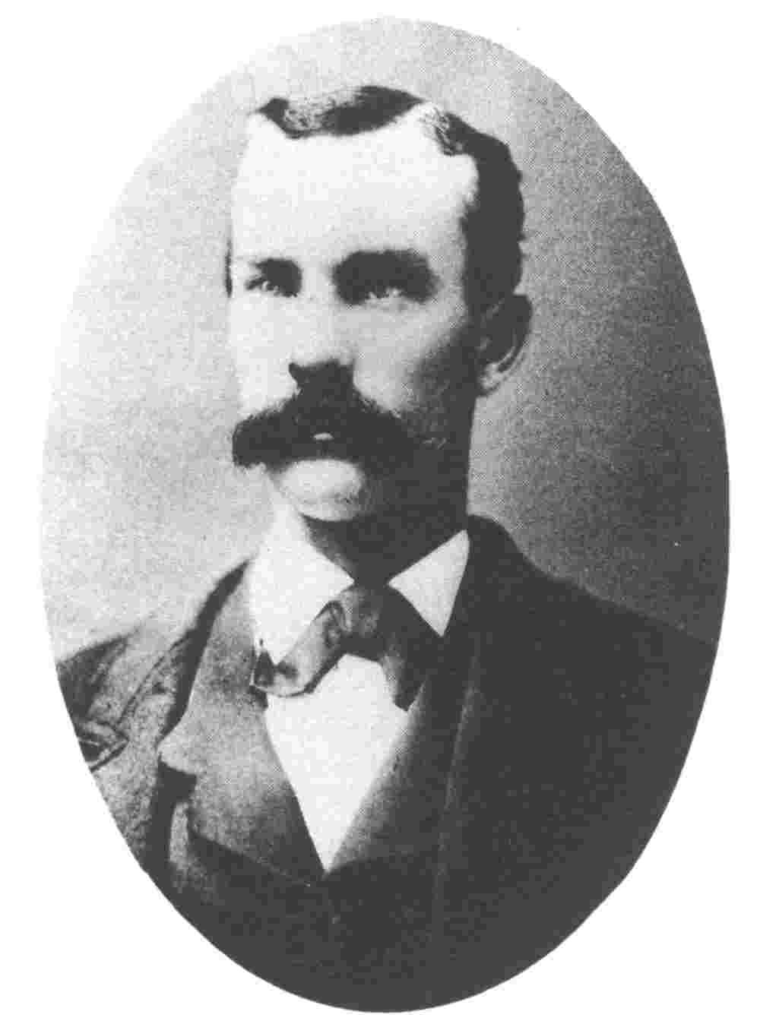
Despite his reputation, Johnny Ringo was not a man who thrived on violence. He was said to be well-educated and well-spoken, and he had a true love for books and learning.
In many ways, he was a complex and contradictory figure, a man who could be both cruel and kind, violent and gentle. Ultimately, though, he was a product of his environment, a man who lived by violence.Post navigation



